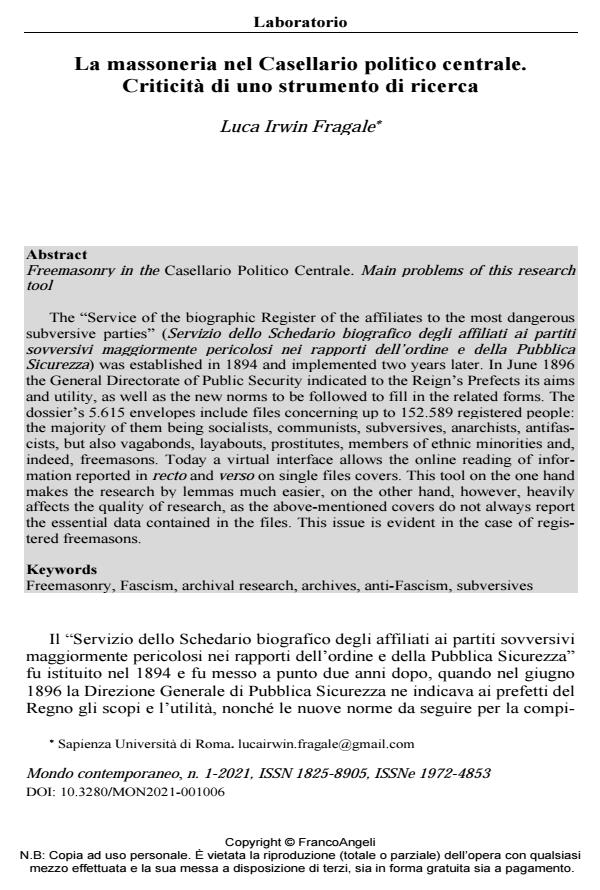Freemasonry in the Casellario Politico Centrale. Main problems of this research tool
Journal title MONDO CONTEMPORANEO
Author/s Luca Irwin Fragale
Publishing Year 2021 Issue 2021/1
Language Italian Pages 13 P. 173-185 File size 220 KB
DOI 10.3280/MON2021-001006
DOI is like a bar code for intellectual property: to have more infomation
click here
Below, you can see the article first page
If you want to buy this article in PDF format, you can do it, following the instructions to buy download credits

FrancoAngeli is member of Publishers International Linking Association, Inc (PILA), a not-for-profit association which run the CrossRef service enabling links to and from online scholarly content.
The "Service of the biographic Register of the affiliates to the most dangerous subversive parties" (Servizio dello Schedario biografico degli affiliati ai partiti sovversivi maggiormente pericolosi nei rapporti dell’ordine e della Pubblica Sicurezza) was established in 1894 and implemented two years later. In June 1896 the General Directorate of Public Security indicated to the Reign’s Prefects its aims and utility, as well as the new norms to be followed to fill in the related forms. The dossier’s 5.615 envelopes include files concerning up to 152.589 registered people: the majority of them being socialists, communists, subversives, anarchists, anti-fascists, but also vagabonds, layabouts, prostitutes, members of ethnic minorities and, indeed, freemasons. Today a virtual interface allows the online reading of in-formation reported in recto and verso on single files covers. This tool on the one hand makes the research by lemmas much easier, on the other hand, however, heavily affects the quality of research, as the above-mentioned covers do not al-ways report the essential data contained in the files. This issue is evident in the case of registered freemasons.
Keywords: Freemasonry, Fascism, archival research, archives, anti-Fascism, subversives
Luca Irwin Fragale, La massoneria nel Casellario politico centrale. Criticità di uno strumento di ricerca in "MONDO CONTEMPORANEO" 1/2021, pp 173-185, DOI: 10.3280/MON2021-001006